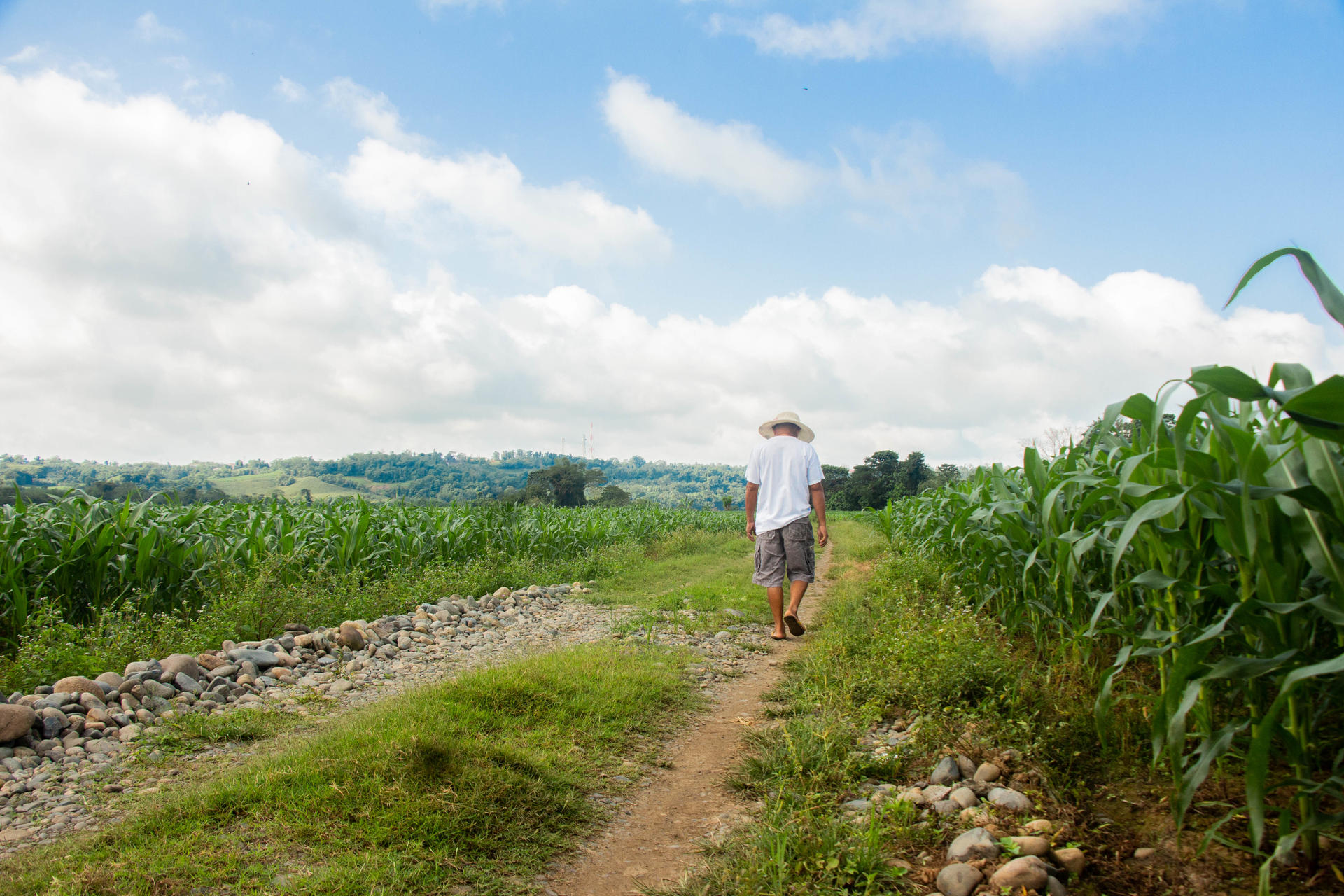Blog Improving agriculture resilience through robust investment planning in the Philippines

The Alliance and Department of Agriculture are collaborating to collect data - using a Climate Risk and Vulnerability Assessment - that assists in understanding the key drivers of vulnerability and identifying high climate-risk areas in need of investment prioritization.
By: Patricia Elaine Bautista
The impacts of extreme weather events in the Philippines have caused the price of produce to fluctuate, affecting smallholder farmers across the country. In 2021, Typhoon Rai (international name) alone caused an estimated damage of US$ 160 Million to the sector, and these losses continue to balloon as the country faces periods of drought and extreme rainfall. The Department of Agriculture (DA)’s budget for 2022 has special provisions for remedies fund and the quick response fund amounting to a total of US$ 19 Million, that falls short in covering losses from one typhoon alone.
To take steps in building resilience in the sector, DA mandated the integration of the Climate Risk and Vulnerability Assessment (CRVA) to the Provincial Commodity Investment Plan (PCIP). This move follows the mainstreaming of the CRVA in all DA projects and plans, particularly in the DA banner programs. The development of CRVA maps followed the methodology of the Alliance of Biodiversity International and CIAT through the facility of the DA Climate Resilient Agriculture Office (DA-CRAO), and the DA Regional Field Office Adaptation and Mitigation Initiative in Agriculture (AMIA) teams.
The PCIP is a rolling plan initiated by DA as a basis for fund allocation under the Philippine Rural Development Project. Intending to mitigate climate risks and support climate resilience in the agriculture and fisheries sector, the investment plan can organize and institutionalize the interventions made in the value chain, from production to marketing.
PCIP as basis for determining necessary developments
Since 2016, the Alliance has been providing expertise in AMIA project of DA along with state universities and colleges to develop the CRVA for various provinces in the Philippines.
Leo Kris Palao, Senior Research Associate at the Alliance, explains that the CRVA is adding more value to the PCIP as it provides relevant data for investment planning.
The results from the assessment shall be used directly by creating a matrix out of the systematized CRVA data, specifying key risks and vulnerabilities, along with the barriers and challenges. This ensures that climate resilience and adaptation measures are included in the development of investment plans at the provincial level.
The DA-CRAO Director Alicia Ilaga mentioned that this integration would facilitate the refinement of the climate change lens which can be used to assess the effects of future climate scenarios in agriculture & fisheries instead of the initial expanded vulnerability and sustainability assessment. Ilaga adds that this puts importance on the adaptive capacity of the communities toward hazards, as well as the crops’ susceptibility to rainfall and changes in temperature.

Climate-Smart Village in Ilagan, Isabela, Philippines (Photo: Mio Mamon / CIAT)
Fortifying partnerships
The collaboration between the Alliance and the Department of Agriculture continues to produce positive outcomes in crafting science-based policies for DA to combat the climate crisis. This is especially important, because climate vulnerability will continue to exert pressure on the agricultural sector—escalating temperature will likely lead to increased risk to extreme events, according to Palao.
Moving forward, Ilaga hopes that apart from assessing vulnerabilities and sharing of methodologies, the work with the Alliance can also focus on other aspects of climate change, where it can impact practical application on the ground when institutionalized through policies.
The Alliance and DA are working towards a more mutually beneficial collaboration moving forward.
Further reading
This story is part of the Alliance's contributions to policy development for climate resilience in the Philippines. It is a follow-up story to the 2020 publication on institutionalizing climate risk and vulnerability assessments.
